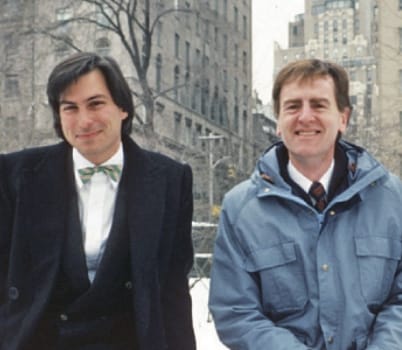Recognizable huh?
But would you recognize it by 1976?
Let’s take a look at the logo evolution for one of the most famous technology companies.
Let’s take a look at the logo evolution for one of the most famous technology companies.
The first version was designed by Steve Jobs and Ronald Wayne in 1976 and represents Isaac Newton sitting under the apple tree with ‘Apple Computer Co.’ on a ribbon banner. Newton and its apple were chosen to represent the idea of science and innovation.
In 1977, designer Rob Janoff brought the famous “rainbow apple”
Since then, the logo has undergone minor modifications, from a black look, to a 3D version in blue, and finally, white.
History of Apple:
Apple Inc. is one of the largest and most famous companies in the computer, software and electronic devices industry. Apple was founded by Steve Jobs, Steve Wozniak and Ronald Wayne in 1976. The company is well known for its Mac computers, its iPod media player, its iPhone smartphones and its iPad tablet. Since its foundation, Apple has remained one of the most innovative and competitive companies of the industry, constantly providing some of the best quality products in the market.
The first Apple computer story:
Speaking to NPR (National Public Radio) in 2006, Wozniak explained that “When I built this Apple the first computer to say a computer should look like a typewriter – it should have a keyboard – and the output device is a TV set, it wasn’t really to show the world [that] here is the direction [it] should go [in]. It was to really show the people around me, to boast, to be clever, to get acknowledgement for having designed a very inexpensive computer.”
So Wozniak produced the first computer with a typewriter-like keyboard and the ability to connect to a regular TV as a screen. Later christened the Apple I, it was the archetype of every modern computer, but Wozniak wasn’t trying to change the world with what he’d produced – he just wanted to show off how much he’d managed to do with so few resources.
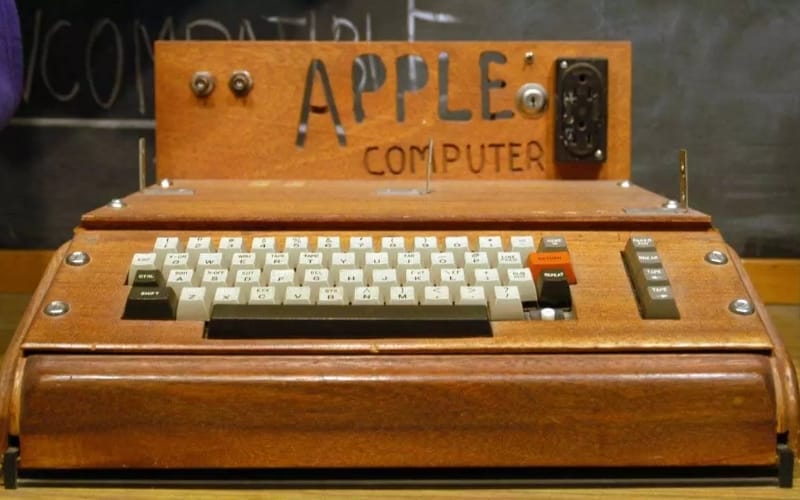
Jobs saw Woz’s computer, recognised its brilliance, and sold his VW microbus to help fund its production. Wozniak sold his HP calculator (which cost a bit more than calculators do today!), and together they founded Apple Computer Inc on 1 April 1976, alongside Ronald Wayne.
Why “Apple”
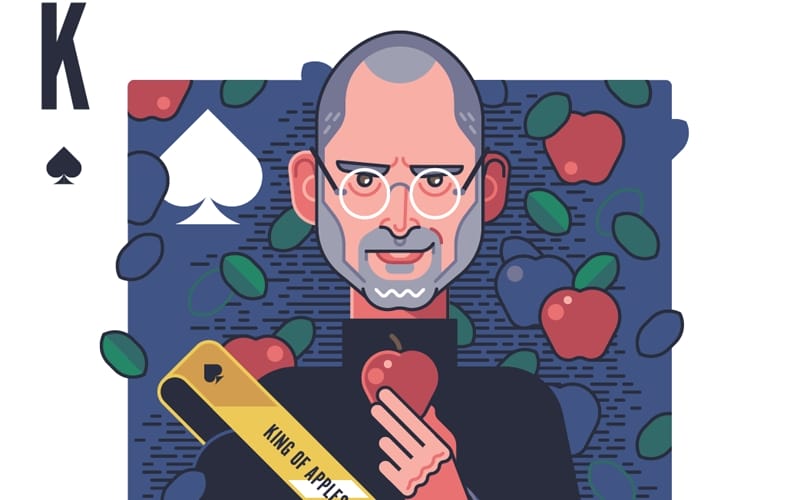
By: https://dribbble.com/shots/2081331-King-of-Apples
Speaking to Byte magazine in December 1984, Wozniak credited Jobs with the idea. “He was working from time to time in the orchards up in Oregon. I thought that it might be because there were apples in the orchard or maybe just its fruitarian nature. Maybe the word just happened to occur to him. In any case, we both tried to come up with better names but neither one of us could think of anything better after Apple was mentioned.”
The name Apple was to cause Apple problems in later years as it was uncomfortably similar to that of the Beatles’ publisher, Apple Corps, but it’s genesis was innocent enough.
According to the biography of Steve Jobs, the name was conceived by Jobs after he returned from apple farm. He apparently thought the name sounded “fun, spirited and not intimidating.”
The name also likely benefited by beginning with an A, which meant it would be nearer the front of any listings.
Apple Marketing strategy through years
And the fact that continues to astonish people is that Apple wasn’t the first to come up with these products. They didn’t design the first MP3 player, the first tablet, or the first smartphone. And yet Apple, along with rival technology companies like Google, Blackberry and Microsoft has access to the same materials, the same bright minds, and the same funding. What’s the difference? Why are more people buying iPods instead of Zunes, or iPhones instead of Samsung?
To explain that , we need to step back a few years and look at the company structure.
Steve Jobs may have been Apple’s most public face, and the co-founder of the company, but he wasn’t its CEO in the mid-1980s. He hadn’t yet turned 30, and many on the board considered him too inexperienced , so they first hired Michael Scott, and later Mark Markkula, who had retired at 32 , Markkula was one of Apple’s initial investors, but he didn’t want to run the company long term.
When he announced his desire to head back to retirement, the company set out to find a replacement. It settled on John Sculley, whom Jobs famously lured to Apple from Pepsi by asking ‘Do you want to sell sugared water for the rest of your life? Or do you want to come with me and change the world?’
Walter Isaacson, in his biography of Steve Jobs, quotes one of Sculley’s reminiscences: ‘I was taken by this young, impetuous genius and thought it would be fun to get to know him a little better.’
‘At Apple, Sculley was greeted like an archangel and, for a time, could do no wrong. He and Jobs were quoted as saying that they could finish each other’s’ sentences.’
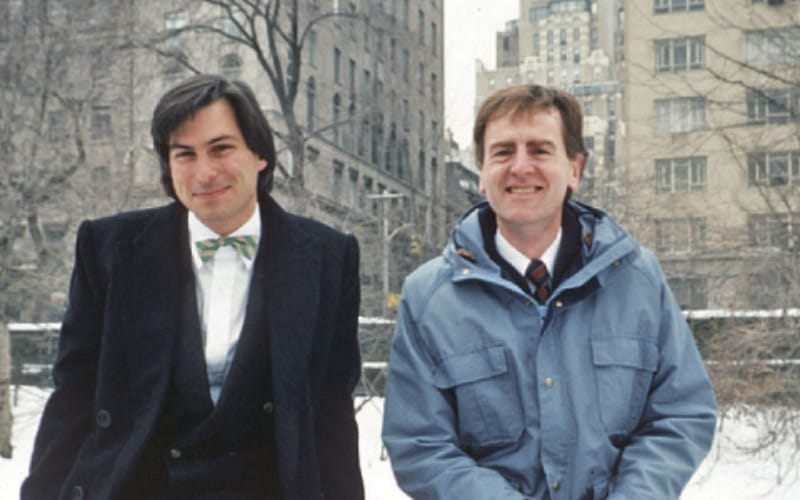
Unfortunately, their management styles were wildly different, though, and it’s perhaps inevitable that this led to some conflicts between the two men. Sculley didn’t like the way that Jobs treated other staff members, and the two came to blows over more practical matters, including the pricing of the Macintosh.
Sculley had to leave the country on business that May, and Jobs saw this as the perfect opportunity to wrest back control of the company. He confided in the senior members of his own team, which at the time included Jean-Louis Gassée, who was being lined up to take over from Jobs on the Macintosh team. Gassée told Sculley what was happening, and Sculley cancelled his trip.
The following morning, Sculley confronted Jobs in front of the whole board, asking if the rumours were true. Jobs said they were, and Sculley once again asked the board to choose between the two of them – him or Jobs. Again, they sided with Sculley, and Jobs’ fate was sealed.
Scully reorganised the company, installed Gassée at the head of the computer division and made Jobs Apple’s chairman. That might sound like a plum job, a promotion, but in reality it was a largely ceremonial role that took the co-founder away from the day-to-day running of the company.
This wasn’t Jobs’ style. He felt the need to move on and do something else and, a few months later, that’s what he did. He resigned from Apple and founded NeXT, a company that would design and build high end workstations for use in academia, taking several key Apple staff with him.
So Steve Jobs has gone, and so has Jean-Louis Gassée, his successor as head of product development. The future isn’t looking so bright for Apple at this point in its story. Despite initially being quite successful in chasing high profits with wide margins, its market is starting to shrink and, with it, so did its retained income. For the first time in the company’s history, its year-end results showed its cash balances to be rising more slowly than they had years before.
Apple was a very different company in the 1990s to the one we know today. It had a lot of products and a lot of stock, but not enough customers. There’s only so long a company can survive like that.
Looking back on it now, you’d be forgiven for thinking it was losing its way. Alongside its computer range, it was producing digital cameras (where it was ahead of most of the big-name players that now dominate photography), video consoles, TV appliances and CD players. It had also invested heavily in the Newton platform to produce the MessagePad and eMate lines.
Apple was still on the lookout for a new operating system, as its in-house efforts weren’t going as well as it had hoped. By 1996 it had shortlisted two possible suppliers: BEOS and NEXTSTEP, each of which had a historical connection to Apple itself.
BEOS was developed by Be Inc, a company founded by former Apple executive, Jean-Louis Gassée. He had been appointed as Apple’s director of European operations in 1981 and, four years later, was responsible for Jobs’ departure from the company.
NEXTSTEP, on the other hand, came from NEXT – the company that Jobs founded upon leaving Apple. Although NEXT’s hardware didn’t go on to sell in the quantities that Apple was shipping, it was highly thought of.
But in the end Apple chose NEXTSTEP.
Looking back on it now, you’d be forgiven for thinking it was losing its way. Alongside its computer range, it was producing digital cameras (where it was ahead of most of the big-name players that now dominate photography), video consoles, TV appliances and CD players. It had also invested heavily in the Newton platform to produce the MessagePad and eMate lines.
Apple was still on the lookout for a new operating system, as its in-house efforts weren’t going as well as it had hoped. By 1996 it had shortlisted two possible suppliers: BEOS and NEXTSTEP, each of which had a historical connection to Apple itself.
BEOS was developed by Be Inc, a company founded by former Apple executive, Jean-Louis Gassée. He had been appointed as Apple’s director of European operations in 1981 and, four years later, was responsible for Jobs’ departure from the company.
NEXTSTEP, on the other hand, came from NEXT – the company that Jobs founded upon leaving Apple. Although NEXT’s hardware didn’t go on to sell in the quantities that Apple was shipping, it was highly thought of.
But in the end Apple chose NEXTSTEP.
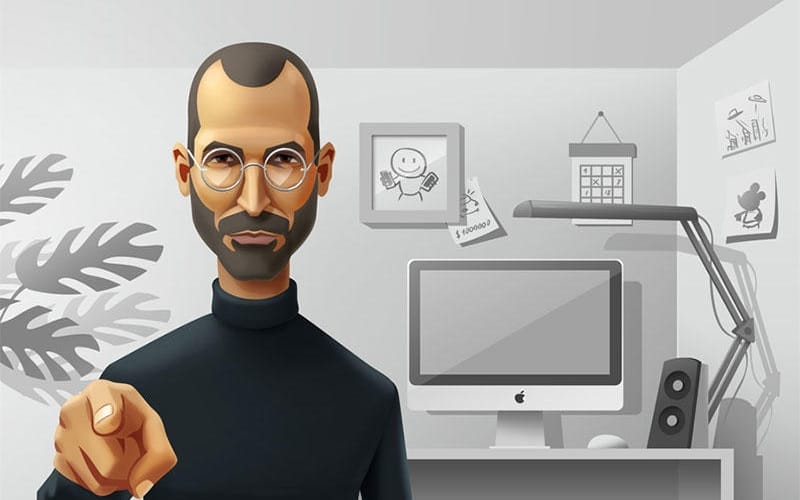
By: https://dribbble.com/shots/2176178-Steve-Jobs
If it had been a simple licensing deal that wouldn’t have been so remarkable, but in truth it was far more than that. Apple purchased NEXT itself – not just its operating system.
Jobs the man who had co-founded the company was returning to it after 12 years away.
But buying NEXT wasn’t enough to fix Apple.
Jobs convinced the board of directors that the company’s CEO, Gil Amelio, had to go and, when it agreed, it installed Jobs in his place as interim CEO. At that point, Apple began a remarkable period of restructuring that leads directly to the successful organisation it is today.
Jobs strategy paid off in the long run, though, and Apple’s computers and operating system are holding their own in a world where rivals are seeing year on year stagnation or – worse – decline.
In 2006 Jobs mocked his rival in an email he sent to Apple staff.
“Team, It turned out that Michael Dell wasn’t perfect at predicting the future. Based on today’s stock market close, Apple is worth more than Dell. Stocks go up and down, and things may be different tomorrow, but I thought it was worth a moment of reflection today.”
And were things “different tomorrow”?
Maybe not tomorrow, but certainly in the long run they were very different indeed. Apple grew to become the most valuable company in the world when measured by market capitalisation.
By now nearly everyone knows Apple company from only the apple logo, and that’s one of the most successful branding of all time. of all time.
